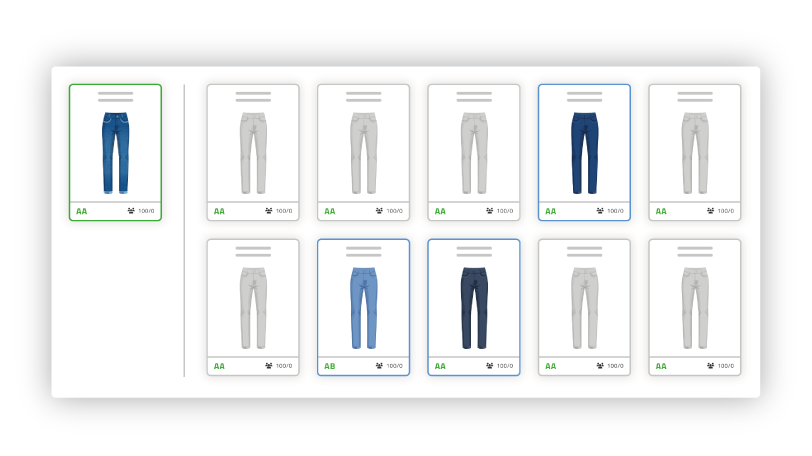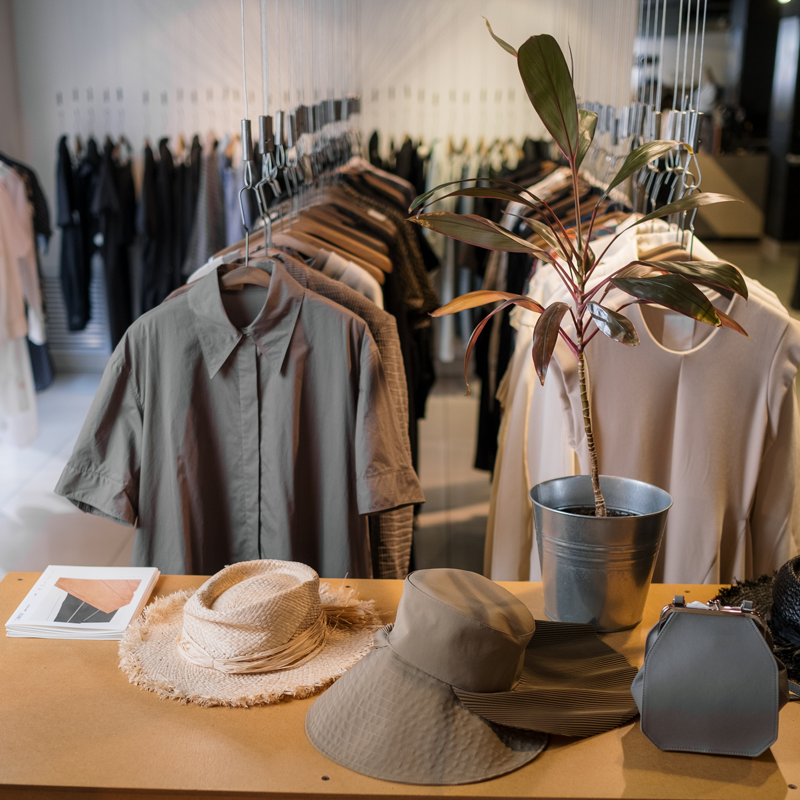
Boost collection sales with increased sales & lower risk of purchasing
FASHIONBOARD Style Investment collects knowledge about sales and compares with previous collection sales as well as customers’ replenishment behavior and creates intelligent sales forecasts for total sales for the entire collection. On the basis of the intelligent sales forecast, purchase proposals are formed based on the individual style and with the right size mix.
You get the opportunity to make smart investments in the right mix, and thus create a bigger business for you and your customers in a strong process that leads to the final purchase and subsequent sale.



FOLLOW NEW COLLECTIONS FROM START TO FINISH
FASHIONBOARD Style Investment follows new collections from start to finish and gives buyers better conditions for a more correct disposal of the collection with the possibility of gambling*. The process ensures that sales and purchases are coordinated before the final purchase orders are initiated.
Calculates forecast based on pre-sale data, comparable styles and expected replenishment sales for the individual customers
FASHIONBOARD Style Investment forms purchase proposals including gambling in relation to the size split
Monitors styles in relation to MOQ limits and best-selling variants for individual customers
Forms sales and profitability forecasts in relation to the collection budget
Comes with built-in CRM functionality with calendar overview in relation to customers, customer visits, orders placed and forecasts
Dashboards create an overview of key figures for sales, inventory status and revenue per market and customer along the way and when the collection is finished
* Gambling refers to the additional purchases placed in addition to pre-sale orders based on expected replenishment.
FASHIONBOARD is not better than people, but it can make people better
We give buyers the tools to make the right decisions by creating an overview and using historical data. If this is combined with the human experience, stronger processes and better results are achieved.
We give buyers the tools to make the right decisions by creating an overview and using historical data.
If this is combined with the human experience, stronger processes and better results are achieved.
FASHIONBOARD STYLE INVESTMENT: THE PHASES IN BRIEF

PHASE 1:
DESIGN & BUDGET
While the collection is being finalized in design and construction, the budget is determined per country, seller and possibly customer.
The collection is uploaded to Style Investment via your ERP system with all relevant information and images attached. Compare the collection with styles from previous collections for more precise purchase proposals incl. gambling.

Phase 2:
Internal presentation
Invite selected people to participate in digital user surveys with images and data about the individual style to understand the collection’s potential.
The rating module is an option that can strengthen decisions in the disposition phase, but Style Investment can also be used without using this functionality.

Phase 3:
Insale
Follow sales with ongoing sales forecasts in relation to last year and budgets Keep an eye out for styles in MOQ danger and see who is missing out on buying the best selling styles.
If necessary, use the built-in CRM functionality to see which customers have been visited, planned or not visited and create an overview of who has placed orders.

Phase 4:
Evaluation & trimming
Finalize pre-sale before disposition begins through dialogue with the sales department about expectations and get the final overview of styles under the MOQ limit.
The collection’s total forecast is formed on the basis of pre-sale, customers’ expected replenishment and by comparing with styles from previous collections.

Phase 5:
Disposition
Go through the collection and decide whether the individual style should be cancelled, ‘buyed to the limit’ or should be gambled on as suggested by Style Investment.
The purchase is converted into sales and profitability and forms a new sales forecast in relation to the original budget. The size mix is optimized on replenishment in relation to previous collections.

Phase 6:
The collection sale
FASHIONBOARD Style Investment creates continuous forecasts and you can therefore follow key figures such as sales, stock status, earnings and turnover per market and customer.
Finally, the collection’s final sales and profitability are calculated.
INNOVATIVE SOFTWARE SOLUTIONS FOR THE CLOTHING INDUSTRY
FASHIONBOARD is a suite of Danish-developed SaaS solutions that focus on optimizing the purchasing and disposition processes in the clothing industry. The modules Demand Planning for NOOS items, Style Investmentfor collection sale and Replenishment for moving goods between stores creates the basis for optimized stocks, higher availability and increased sales efficiency.
FASHIONBOARD is a suite of Danish-developed SaaS solutions that focus on optimizing the purchasing and disposition processes in the clothing industry.
The modules Demand Planning for NOOS items, Style Investmentfor collection sale and Replenishment for moving goods between stores creates the basis for optimized stocks, higher availability and increased sales efficiency.
Optimize your collection sales with the built-in tools
FASHIONBOARD Style Investment comes more a series of tools that help optimize collection sales from start to finish.
CRM functionality
Make sure to get past all customers in the sales and visit them in the right order according to their value to the company
Rating module
Rate early in the collection and individual styles must be taken out of the collection based on the internal assessment of all styles in the rating module
Comparison of styles
Strengthen the basis of gambling suggestions by comparing styles from the new collection with styles from previous seasons
ABC
Rate all styles and their performance in sales in the ABC classification. Decide which styles should be included in the final collection – and which should be left out?
Reporting
Get the overview from start to finish with the built-in reporting functionalities. The dashboard ensures that you always focus on the most important things
Budgeting
Enter or import your budgets for countries, sellers, customers and categories. Follow the collection continuously and compare with the set budget
FASHIONBOARD is not better than people, but it can make people better
We give buyers the tools to make the right decisions by creating an overview and using historical data.
If this is combined with the human experience, stronger processes and better results are achieved.
We give buyers the tools to make the right decisions by creating an overview and using historical data. If this is combined with the human experience, stronger processes and better results are achieved.
Highlights
See selected highlights from Style Investment
Dashboards

Get an overview of the collection’s development in relation to sales, planning, forecasts, customers and possibly meeting bookings.
Ratings

Use the rating module to send out the collection’s styles to selected people. Each style is assessed on a scale from 1-5 and it is optional whether the price of the style should be part of the assessment. Sent out in connection with the internal presentation and can subsequently give rise to trimming the collection before it is presented to customers.
Other fashionboard modules

Demand planning
FASHIONBOARD Demand Planning solves problems that are too complex to solve in an EPR system or spreadsheet. FASHIONBOARD Demand Planning is continuously updated with data that keeps track of your inflow and makes it possible to react more quickly. Continuously monitor the quality of key figures around purchasing and disposition.
Other fashionboard modules

Demand planning
FASHIONBOARD Demand Planning solves problems that are too complex to solve in an EPR system or spreadsheet. FASHIONBOARD Demand Planning is continuously updated with data that keeps track of your inflow and makes it possible to react more quickly. Continuously monitor the quality of key figures around purchasing and disposition.

Replenishment
FASHIONBOARD Replenishment monitors all product flows, stocks and sales to predict future sales for the individual store. The system’s algorithms will calculate proposals for the individual store at the style and size level, taking into account the set delivery days and chosen storage strategies


